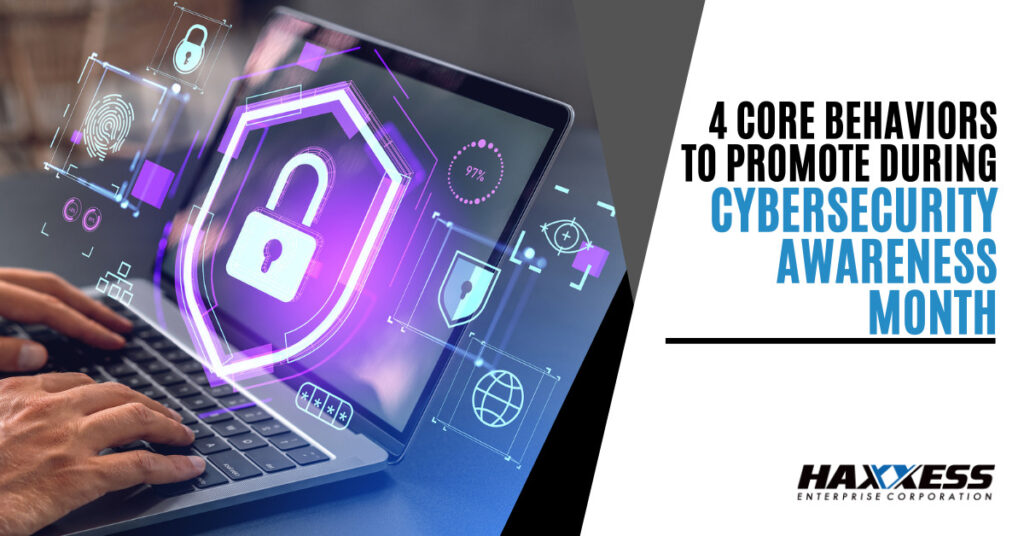
The digital landscape that shapes our modern world is both a marvel and a potential minefield. In this age of ever-advancing technology, it’s crucial for individuals and organizations to understand that cybersecurity is not merely an option but a necessity.
Fortunately, there is an entire month dedicated to this cause – Cybersecurity Awareness Month, celebrated every October. It serves as a stark reminder of the critical importance of safeguarding our digital lives and assets.
In this article, we’ll delve into the core behaviors that need to be promoted during Cybersecurity Awareness Month and beyond.
Cybersecurity Awareness Month, also known as NCSAM (National Cyber Security Awareness Month), was established to shed light on the significance of cyber readiness and online safety. This annual observance aims to provide both individuals and organizations with resources, tools, and guidance to stay secure in an increasingly digital world. With the internet woven into the fabric of daily life, it’s imperative to understand the core behaviors that underpin a secure online existence.
At the heart of personal and organizational cybersecurity lies the humble password. Passwords act as the first line of defense against cyber threats. It’s astounding how many breaches occur due to weak or compromised passwords. To bolster our cybersecurity posture, promoting good password hygiene is paramount.
Promote the use of 2FA as an additional layer of security, making it significantly harder for unauthorized individuals to gain access to accounts.
Phishing attacks remain one of the most prevalent cybersecurity threats. Hackers employ various tactics to trick individuals into revealing sensitive information, such as login credentials, credit card numbers, or personal data. To combat this, we need to promote vigilant behaviors.
For organizations, it’s critical to invest in employee training to ensure they understand the implications of falling victim to phishing attacks.
Outdated software can be a gateway for cybercriminals to exploit vulnerabilities in your system. Therefore, keeping all software up to date is a fundamental behavior to encourage.
In the face of ransomware attacks and unexpected data loss, regular data backups are a lifesaver. Promoting this behavior is not just about cybersecurity; it’s about preparedness.
For sensitive data, recommend encryption before backing up, ensuring an additional layer of protection in case backups fall into the wrong hands.
Cybersecurity Awareness Month is a reminder that our digital lives need to be safeguarded with vigilance. The four core behaviors we’ve discussed—Password Hygiene, Phishing Awareness, Regular Software Updates, and Data Backups—are not just a checklist; they are a way of life in the digital age.
As we navigate this ever-evolving landscape, let’s make a commitment to prioritize these behaviors not only during October but throughout the year. By doing so, we strengthen our digital resilience and contribute to a safer online world.
Contact Haxxess to learn more about how we can help you enhance your cybersecurity practices. We are dedicated to ensuring your digital safety and peace of mind.